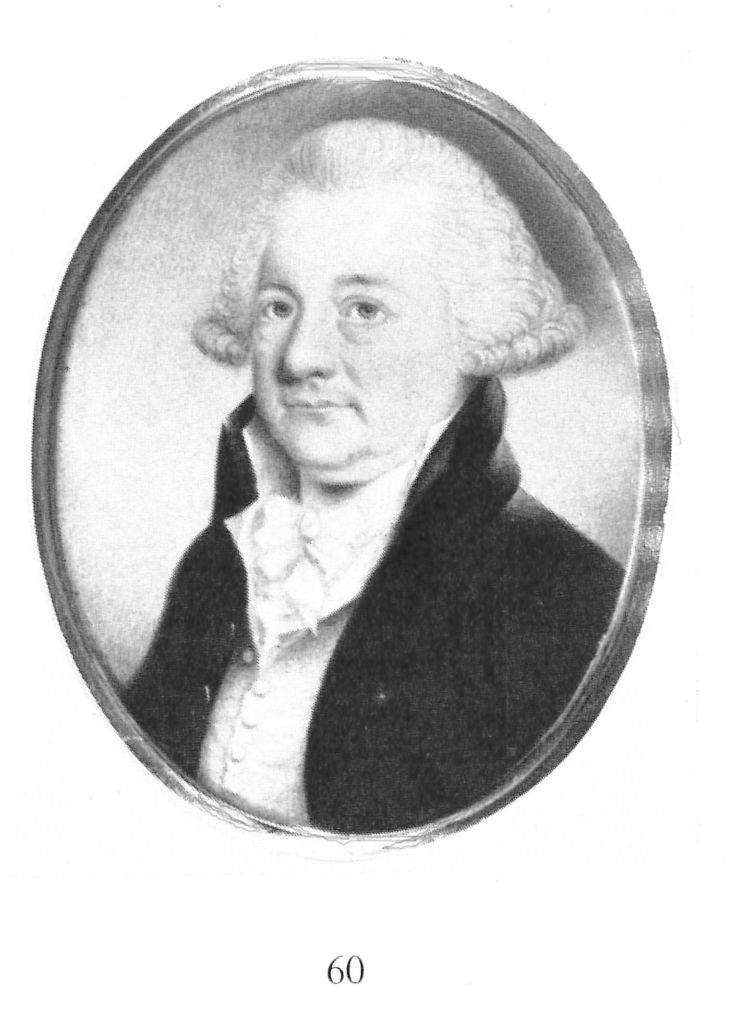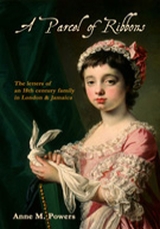When I was transcribing the 1754 census of Spanish Town I came across three people listed as “free Mulattoes or Descendants from them admitted to the privileges of white people by Acts of the Legislature”. Two of them I knew already – Mary Johnston Rose and her son Thomas Wynter who each lived in the house that they owned. Then there was Susanna Hosier who was recorded as a sugar planter and who owned a house worth £60 that was un-tenanted. I was surprised that I did not know who she was and could not find any reference to her, since as a mixed race woman she seemed to be unusually wealthy.
Sometime later I was working on the family of Susanna Augier and realised that the name was sometimes written as Augier and sometimes as Hosier. Once you pronounce Augier as ‘O-gee-er’ with a soft G you realise how it could come to be written as Hosier. It was also occasionally mis-transcribed as Augire, Angier and Augine. I often use dictation software when transcribing Wills and writing these blog pieces, and the software delivers ‘osier’ for ‘Augier’ ! It is the kind of name transformation that makes the work of the genealogist both frustrating and fascinating.
Having resolved the name puzzle I was able to build the story of Susanna Augier and her extended family. She was a quite exceptional woman and well known to the Jamaican Plantocracy. Her case was used to support the argument in the construction of the 1761 act preventing “Devizes to Negroes”, limiting the inheritance of black, mixed race, and illegitimate Jamaicans to £2000. The size of her inheritance seems to have been exceptional, but it provided useful ammunition for those wanting to restrict the size of legacies.
Susanna was the daughter of John Augier, a planter who died in 1722. He seems to have had little connection to his origins and a fondness and care for his Jamaican family. Under his Will he freed his daughters Susanna, Mary, Jenny, Frances and Jane. Subsequent references to his family show that there was a further daughter called Elizabeth and a son called Jacob, and probably a daughter Sarah who died young. Susanna, who was probably born about 1707, seems to have been particularly favoured and in due course became the mother of four children with a planter called Peter Caillard or Calliard. Mary, Peter, Frances and Susanna Caillard were born between 1725 and 1728. [But see Postscript below].
Peter Caillard died about 1728 leaving Susanna hugely wealthy. In addition to her inheritance from her father she now had a life interest in several properties in Kingston and Spanish Town and an estate including a Penn in St Catherine and a Mountain at Way Water, all valued for probate at £26,150 8s 1d, and entailed for her children Mary and Peter. By 1753 Susanna owned 950 acres of mainly good land in the parish of St Andrew (including 40 acres under coffee, 100 acres of provision ground and 800 acres of woodland) with eighty negroes, one white servant and forty-two head of cattle. Like many other free mixed race Jamaicans Susanna owned slaves – for example John Augier ‘a negro man belonging to Susanna Augier’ was baptised in Kingston on the 4th of March 1740. Few women in eighteenth century Jamaica owned estates (most who did were planters widows), fewer still managed them themselves as Susanna appears to have done.
Peter and Susanna Caillard both died young, but in 1738 Susanna applied for the rights of whites for herself and her children Mary and Frances Caillard. A Private Act of the Jamaica Assembly dated 19th of July 1738 granted them the legal status of whites.
Mary Caillard travelled to England, perhaps to meet her father’s family in Bristol, and on the 19th of April 1748 at Henbury, Gloucestershire she married Gilbert Ford who would in due course become Jamaican Attorney General. It was an unusual marriage for a mixed race Jamaican, even more so for a young English Lawyer. Ford came from a well-to-do family – his brother James became Physician Extraordinary to Queen Charlotte, Physician Extraordinary to the Westminster Lying-in hospital, and Consulting Man-Midwife to the Westminster General dispensary. Sadly there were no children of the marriage and Mary died in May 1754 at Clifton, Bristol[1]. It seems to have been after her death that Gilbert Ford went to Jamaica where he married for a second time to Elizabeth Aikenhead.
Within about a year of Caillard’s death Susanna was living with Gibson Dalzell with whom she had two further children, Frances and Robert, and on his death in about 1755 she inherited a life interest in his estate worth £6854 1s 3d. Dalzell made full provision for Frances and Robert who by then were living with him in London.
Robert Dalzell was sent to his father’s college, Christ Church Oxford in 1761. In 1762 aged just twenty he married Miss Jane Dodd, ‘an agreeable young lady of large fortune, and with every other accomplishment necessary to adorn the marriage state.’ [2] There were three children of his marriage who lived into the nineteenth century and had descendants, owning the manors of Tidworth and Mackney in Berkshire.
Frances Dalzell married the Honourable George Duff, son of the first Earl of Fife, on the 7th of April 1757 and moved into the ranks of the aristocracy. Tragically her first child was ‘a lunatic from birth’[3] perhaps severely mentally handicapped, or born with Down’s syndrome. Her son George and her two daughters died unmarried.
Susanna herself died in February 1757 and was buried on the 12th in Kingston.
All of this would be remarkable enough until you take into account the rest of Susanna Augier’s siblings. In 1747 two Private Acts of the Jamaican Assembly were passed. The first gave the rights of whites to Jane Augier and her children Edward James, Thomas, Peter and Dorothy. The second on behalf of Mary Augier gave ‘the same rights and privileges with English Subjects, born of white parents’ to Mary’s children William, Elizabeth, Jane and Eleanor; to her brother and sister Jacob and Elizabeth and to Elizabeth’s son John. Even this does not tell the whole story.
Of John Augier’s daughters it must be assumed that Jenny and Frances had probably died before 1747 and so were not included in the family’s bid to acquire full white status. Jenny had a daughter called Sharlott, born in 1729 and dead just under two years later, whose father was the choleric Theophilus Blechynden.
Around the time of his daughter Sharlott’s death he married Florence Fulton the widow of Dean Poyntz who had left his wife an annuity of £200 a year. Poyntz was in partnership with Mathias Philp and years later Blechynden and his wife sued the estate of Philp’s other partner William Perrin for £10,000 of back payments of her annuity. The case dragged on for years and was only finally settled by Blechynden’s son when almost all the other parties were dead!
A not untypical example of Jamaican litigation.
Frances Augier had two sons William and John Muir, and a daughter Hannah Spencer born in 1736. Frances probably died in Kingston in February 1738. Elizabeth whose son John was granted the rights of whites in 1747 had also had a daughter called Elizabeth who died at the age of four, both were the children of Richard Asheton. Elizabeth was buried in Kingston on the 16th of January 1749/50. Jacob Augier also died in Kingston and was buried on the 18th of September 1751, I have found no record that he had any children.
Mary and Jane Augier both had large families. Jane had six children with John DeCumming, of whom two died before she could apply for their rights. It is the children of Mary who have descendants that we know the most about. Mary had at least seven children with William Tyndall a Kingston merchant, and her daughter Elizabeth (born in 1726) had nine children with the wealthy Kingston merchant John Morse. Morse also had a daughter called Frances, probably born before he began his relationship with Elizabeth, who was brought up by his sister Sarah Vanheelen in Holland, and who died, unmarried, in London about 1818. Several of his children died before their father, but his three youngest daughters all married and had descendants.
John Morse had returned to London before his death – he was buried at St Mary Aldermanbury on the 2nd of April 1781. His family may have travelled with him, or may already have been educated in England. Catherine Morse married a young lawyer called Edmund Green at St Mary Aldermanbury in 1777 – the witnesses at the wedding included her uncle by marriage Joseph Royall.
Catherine had eight children, among whom her daughter Frances Ann married William Farington from the Isle of Wight who became an Admiral in the Royal Navy. Edmund’s training as a lawyer was called into play during a lengthy Chancery suit[4] on behalf of John Morse’s children against the Morse family who were unhappy at the legacies left to his mixed race illegitimate offspring. In this he may have had help from Robert Cooper Lee who had himself secured his children’s future via a Private Act of the Assembly passed in 1776. Frances Lee, his daughter, left legacies to her friend Catherine Green and her daughter Frances Ann Farington.
As the boom days of Jamaica were coming to an end so the focus of empire switched to India. Catherine’s sisters Ann Frances and Sarah went to India with their brother Robert and both married there in 1780. Ann Frances married Nathaniel Middleton and had ten children born variously in India and England. The Morse/Middleton fortune passed down the generations and in 1898, at the death of Hastings Nathaniel Middleton, was worth £84,100 15s 7d.
Sarah married William Cator in Calcutta and their daughter Ann Frances became the wife of Colonel Edward Baynes who as Adjutant General to the British forces in North America was sent to negotiate the armistice with the US government in July 1812. After service in North America they settled happily to retirement in Devon, their investments managed by Robert Cooper Lee’s son Richard. Their son William Craig Baynes migrated to Canada taking charge of the extensive estates acquired while his father was serving in Quebec.
Edmund Green eventually won the Chancery case on behalf of his wife and her siblings.
By the early nineteenth century the descendants of the Augier sisters had blended seamlessly into the highest levels of British society, their Jamaican slave roots conveniently air-brushed from history.
————————————-
POSTSCRIPT : 2nd August 2012
I have been looking again at the children of Susanna Augier and I think a confusion has arisen over her children with Peter Caillard. I now think that her children with Peter Caillard were Mary, Peter and Susanna and that there is only one child called Frances – the daughter of Gibson Dalzell.
[1] I have a reader of this website to thank for this information. “Last week died at Clifton near Bristol, after a lingering illness, the Lady of Gilbert Ford of the Middle-Temple, Esq.” London Evening Post (London, England), May 7, 1754 – May 9, 1754
[2] ‘Parishes: Tidmarsh’, A History of the County of Berkshire: Volume 3 (1923), pp. 433-437. URL: http://www.british-history.ac.uk
[4] For more detail on the Morse sisters and the Chancery case see Daniel Livesay (2018) Children of Uncertain Fortune: Mixed-Race Jamaicans in Britain and the Atlantic Family 1733-1833. Williamsburg, VA.:Omohundro Institute of Early American History & Culture and Chapel Hill, NC: University of North Carolina Press.









